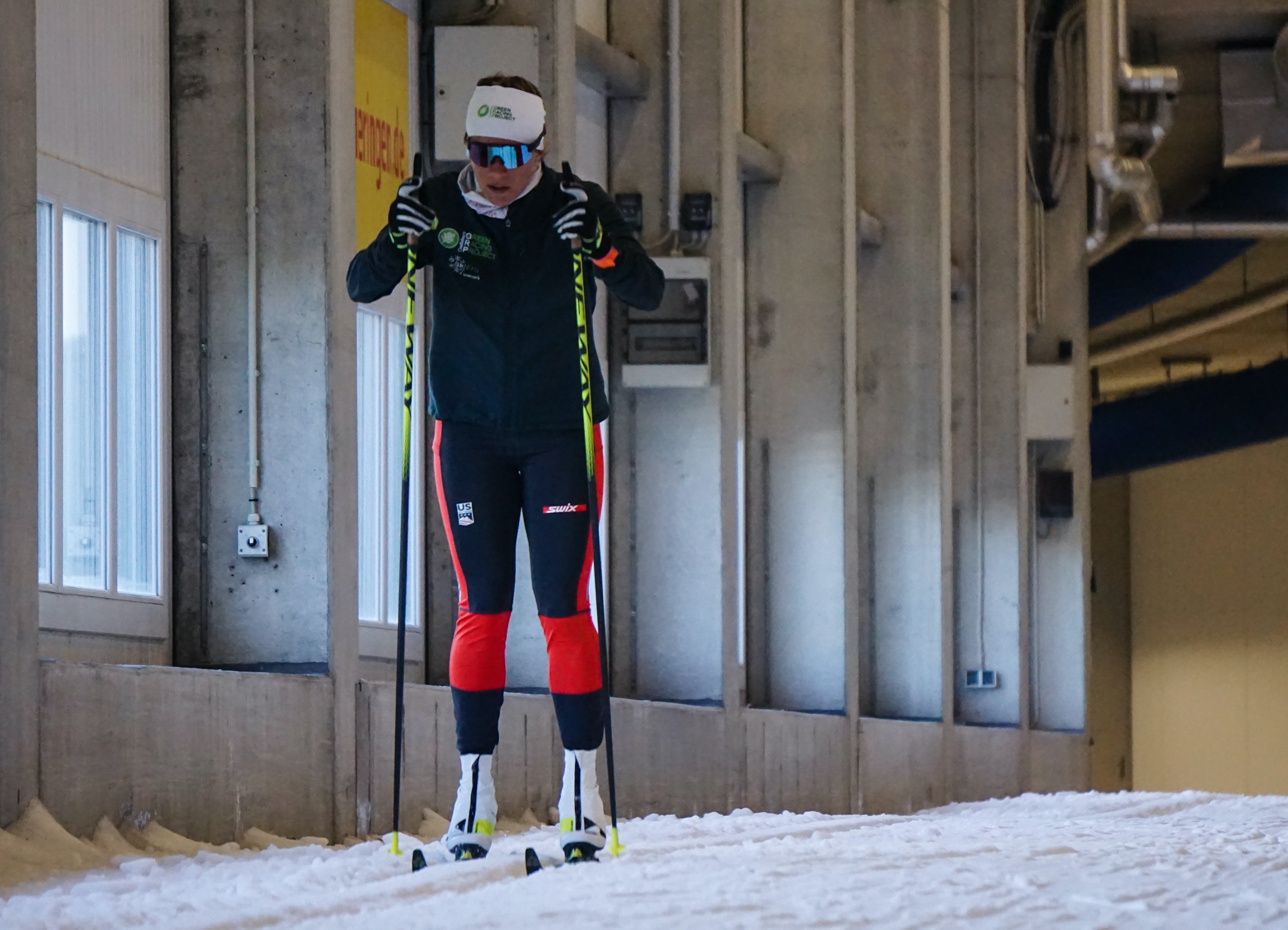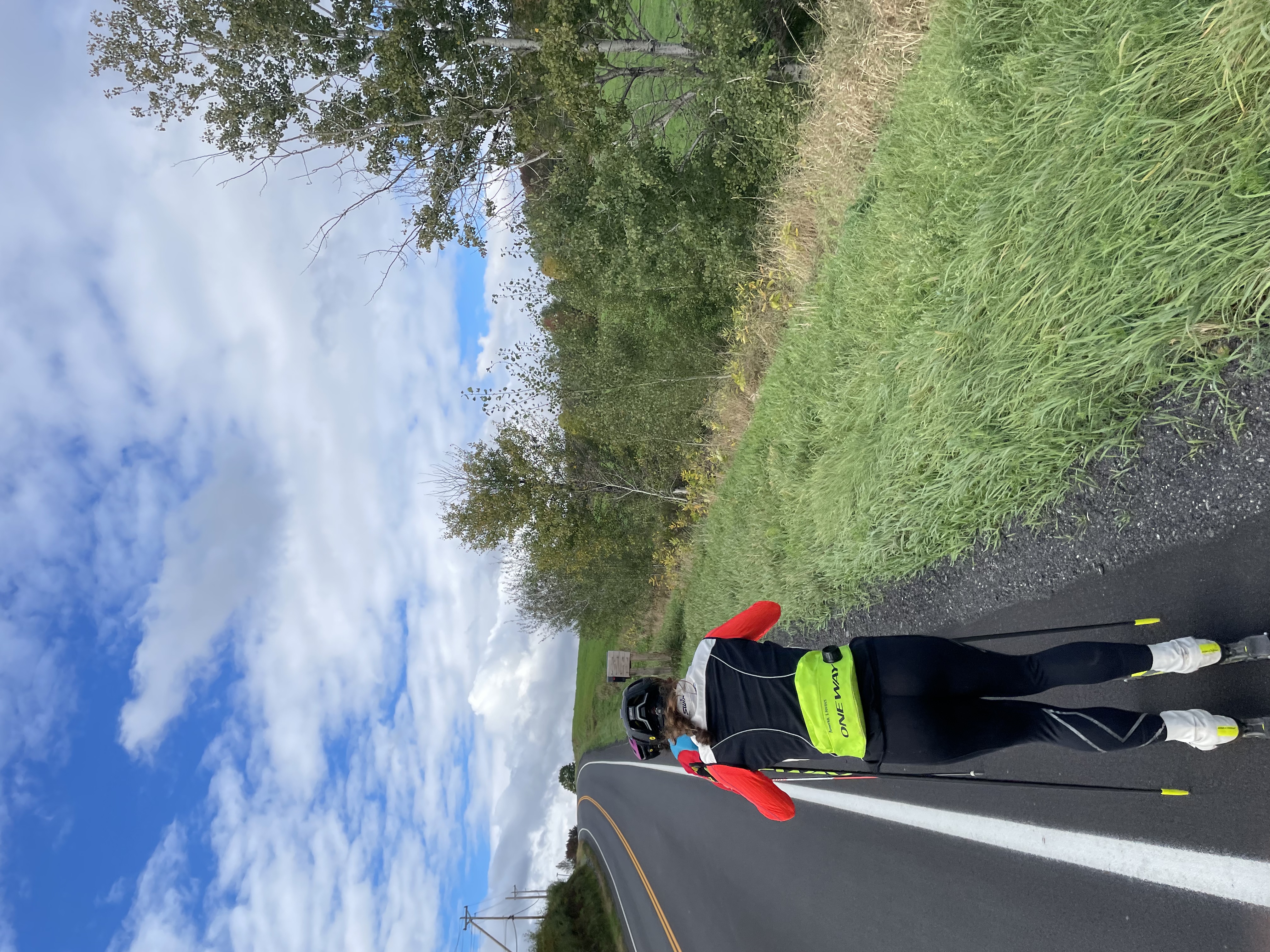Posted by Annika Landis on Oct 14th 2021
Powering Through A Training Slump
Hello Ski Post!
Right now, the Green Racing Project is enjoying some absolutely beautiful fall colors
here in Vermont and taking full advantage of the perfect weather to get in some high quality
training. In September, the team travelled to Germany where we spent two weeks training in the
Oberhof ski tunnel. Our focus in the tunnel was intensity and speed, which is good because
distance training would have been a lot of laps!


(Photo Creds to Caitlin Patterson! Training in the ski tunnel in Oberhof, Germany.)
When we got back from Europe, we switched our focus back to a distance and strength focus, while still including some intensity and speed workouts. Between the training opportunities and the perfect weather, here has been very little to complain about.
No matter how much you love training, it can still be hard to maintain a high level of motivation for the nine-ish months we spend training or racing full time. Ski training is hard, and let’s face it, can be tedious at times. There are moments throughout the year where it starts to take a toll, both physically and mentally. I tend to experience a “slump” towards the end of the summer, when winter feels so close and yet impossibly far away. What does a slump feel like? It’s different for everybody, but for me it looks more or less like this:
- Low motivation before workouts
- trouble focusing during workouts or being bored
- increased mental/physical fatigue
Maybe this doesn’t happen to you, and you are fired up every session no matter the day or month. But if it does - I’m here to tell you it’s ok and that there are ways to come out the other side of any slump feeling highly motivated and ready to push through towards the highs of race season.

(Out for a distance skate ski during a bluebird day.)
I think sometimes endurance athletes feel that expressing fatigue or low motivation is embarrassing or shows a lack of commitment/effort. There is nothing shameful about admitting your mental energy is low or that training feels tedious. In fact, acknowledging how your body and mind feel can help you (and your coach) better structure training to be more productive for you while you navigate your way out of the temporary slump.
Here a few strategies that I am using right now:
Focus on goals:
I find that focusing on long term, short term and even daily goals can help me get through periods of low motivation.
- Daily Goals - What is one thing I can focus on in this session that will make it productive for me? Technique? Attitude? Pacing? For example, this morning we did L4 running with poles and my goal for the workout was to use positive self talk during each interval to keep my mind engaged and help me push through fatigue in my legs.
- Weekly Goals - What is the overall goal of this week and can I pick three workouts to prioritize/bring my full focus to, in order to accomplish that goal?
- Situate your training block within the context of your long term goals - How will this week or block of training help me reach my goals for the racing season? How might this specific session benefit me in the long run? (For example - In February when racing the Craftsbury Supertour, can I look back and draw confidence from knowing how to pace a certain hill that I did during intervals this week on rollerskis?)
Talk to your coach:
This is something it has taken me a long time to get better at doing and I am still learning that the ‘suffer in silence approach’ is often not very productive for me and it leaves my coach in the dark about what is actually going on in my head and therefore unable to help me in a meaningful way. Letting your coach know what is going on allows them to help you get back on track, because chances are they have seen this before and have some strategies that you might not have thought of.
If you don’t have a designated coach, talking to a trusted friend or training partner can be another way to get support for how you are feeling.


(Taking a break during a distance DP to hydrate and enjoy the foliage.)
Take a little break?
This time of year it’s hard training-wise to take an extended break, but if you are really struggling to be engaged, even a day or two of switching up your routine can be really helpful. Because a training slump can also be an indicator of overtraining, a break might not be a bad idea. A few weekends ago, I attended a wedding in Boston, and was desperately looking for a suitable hill to do my planned Saturday morning 4x5’ L4 bounding workout on. Finally, I decided to embrace something different and run a 5k effort on the Charles River bike path. It was about 20 min of all out running and a nice mental change of pace, especially when I got a coffee and pastry and did some easy distance training while sightseeing by bike!

(Sightseeing and recovery biking in Boston.)
When training feels abstract, it is harder to encourage yourself that it is important to do. Grounding daily training in goals that you have already set for yourself can be a good way to make individual sessions feel relevant. Using your coaches and teammates as resources for support and letting yourself take a small break if you need one are also great ways to bring yourself back to full energy.

